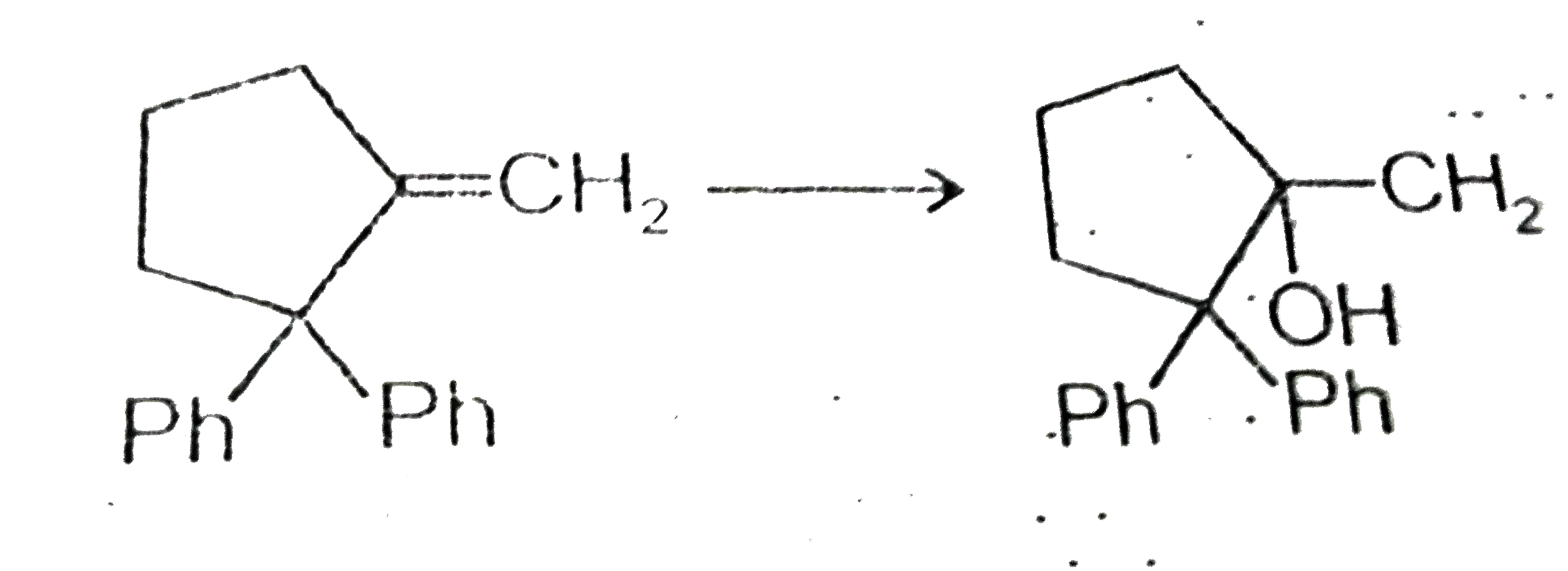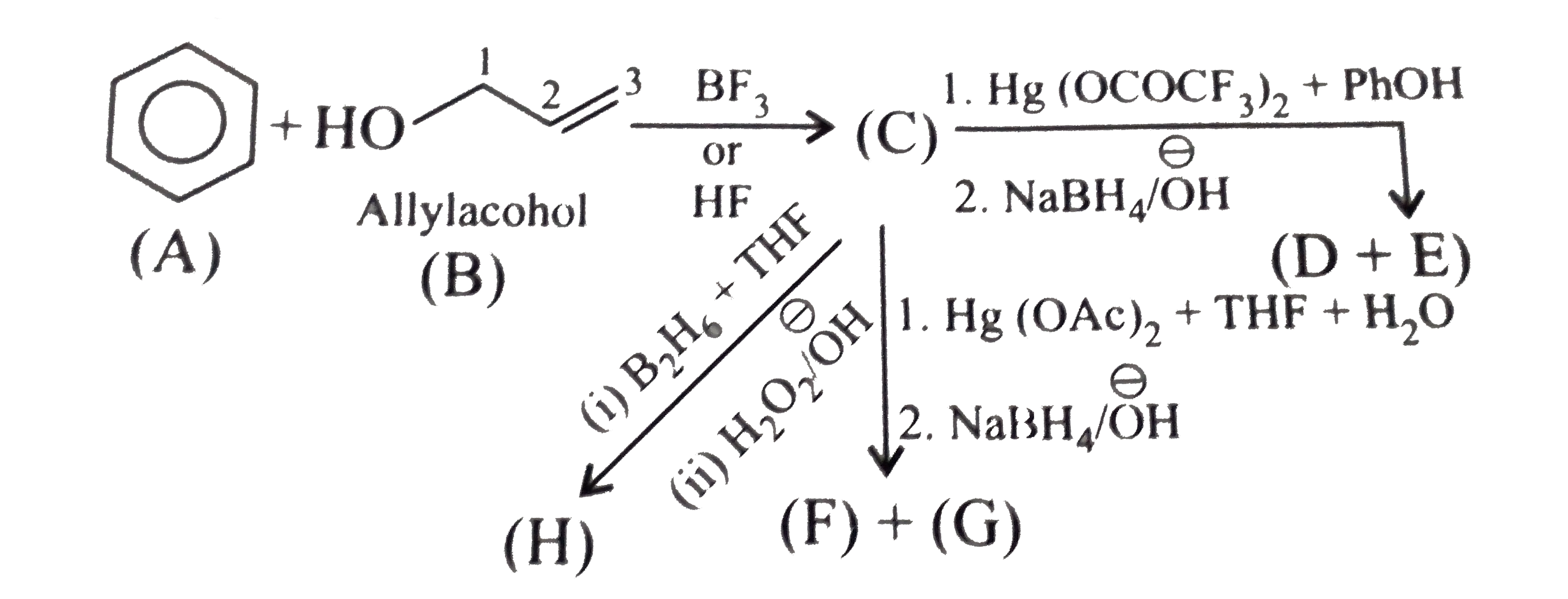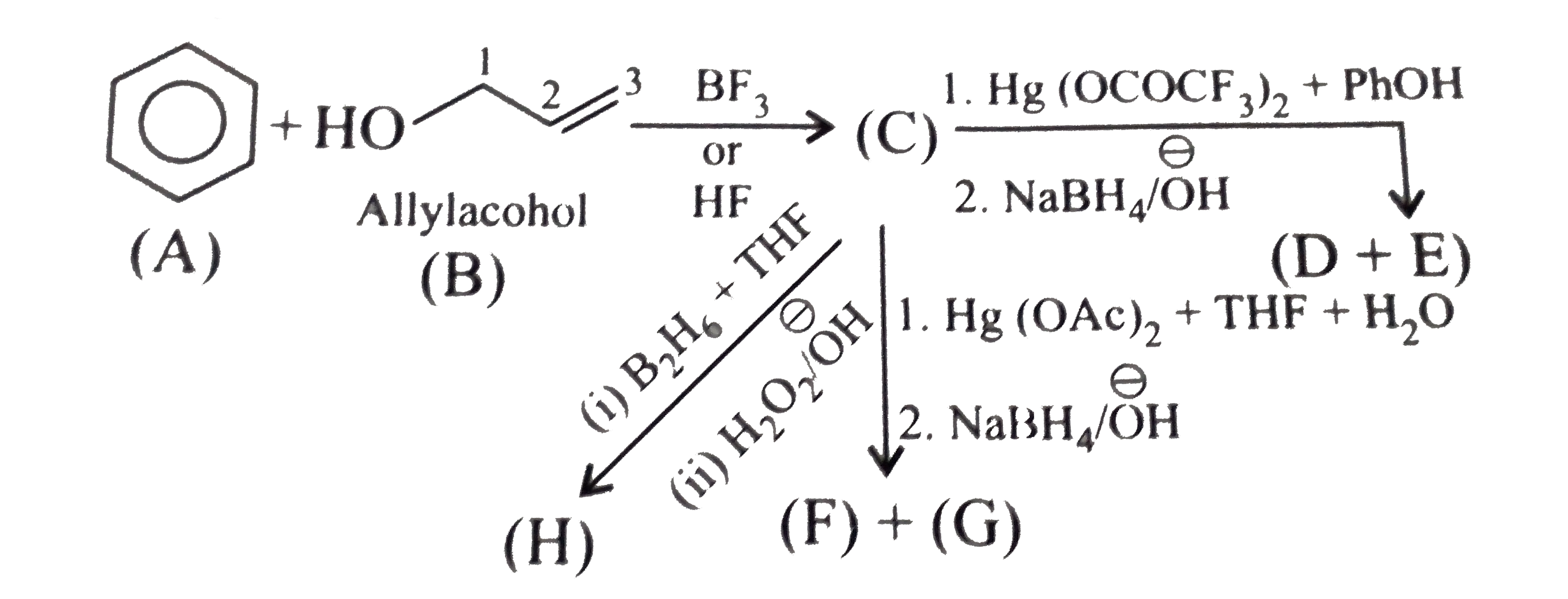Statement-1: Hydroboration by oxidation of propene gives anti-Markovnikoff's alcohol.
and
Statement-2: Hydroboration reaction proceeds through Markovnikoff's addition
The correct Answer is:B
To analyze the statements provided in the question, we need to break down the concepts of hydroboration and oxidation, particularly in the context of propene.
Step 1: Understanding Hydroboration
Hydroboration is a reaction where borane (BH3) adds across a double bond in an alkene. In the case of propene (C3H6), the reaction can be represented as follows:
- Propene reacts with BH3 to form an organoborane intermediate.
Step 2: Mechanism of Hydroboration
During hydroboration, the addition of BH3 occurs in a syn fashion, meaning both the boron atom and the hydrogen atom add to the same side of the double bond. The boron atom attaches to the less substituted carbon (the carbon with more hydrogen atoms), while the hydrogen atom attaches to the more substituted carbon. This is contrary to the Markovnikov's rule, which states that the more substituted carbon would typically receive the electrophile (in this case, boron).
Step 3: Oxidation of the Organoborane
After hydroboration, the organoborane intermediate undergoes oxidation, typically using hydrogen peroxide (H2O2) in a basic medium. This step converts the boron atom into a hydroxyl group (-OH), resulting in the formation of an alcohol.
Step 4: Resulting Alcohol
The final product from the hydroboration-oxidation of propene is an alcohol where the hydroxyl group is attached to the less substituted carbon. This outcome aligns with the anti-Markovnikov's rule, which states that the -OH group will attach to the carbon with more hydrogen atoms.
Conclusion
- Statement 1: Hydroboration by oxidation of propene gives anti-Markovnikov's alcohol. This statement is true.
- Statement 2: Hydroboration reaction proceeds through Markovnikov's addition. This statement is also true because the first step of hydroboration involves the addition of BH3 according to Markovnikov's rule.
Final Answer
Both statements are true, but they refer to different aspects of the reaction mechanism.
---
Hydroboration is a reaction where borane (BH3) adds across a double bond in an alkene. In the case of propene (C3H6), the reaction can be represented as follows:
- Propene reacts with BH3 to form an organoborane intermediate.
During hydroboration, the addition of BH3 occurs in a syn fashion, meaning both the boron atom and the hydrogen atom add to the same side of the double bond. The boron atom attaches to the less substituted carbon (the carbon with more hydrogen atoms), while the hydrogen atom attaches to the more substituted carbon. This is contrary to the Markovnikov's rule, which states that the more substituted carbon would typically receive the electrophile (in this case, boron).
After hydroboration, the organoborane intermediate undergoes oxidation, typically using hydrogen peroxide (H2O2) in a basic medium. This step converts the boron atom into a hydroxyl group (-OH), resulting in the formation of an alcohol.
The final product from the hydroboration-oxidation of propene is an alcohol where the hydroxyl group is attached to the less substituted carbon. This outcome aligns with the anti-Markovnikov's rule, which states that the -OH group will attach to the carbon with more hydrogen atoms.
- Statement 1: Hydroboration by oxidation of propene gives anti-Markovnikov's alcohol. This statement is true.
- Statement 2: Hydroboration reaction proceeds through Markovnikov's addition. This statement is also true because the first step of hydroboration involves the addition of BH3 according to Markovnikov's rule.
Both statements are true, but they refer to different aspects of the reaction mechanism.
Topper's Solved these Questions
- HYDROCARBONSBook:AAKASH INSTITUTE ENGLISHChapter:HYDROCARBONSExercise:SECTION-F MATRIX-MATCH TYPE QUESTIONS
Explore 5 Videos
- HYDROCARBONSBook:AAKASH INSTITUTE ENGLISHChapter:HYDROCARBONSExercise:SECTION-G INTEGER ANSWER TYPE QUESTIONS
Explore 2 Videos
- HYDROCARBONSBook:AAKASH INSTITUTE ENGLISHChapter:HYDROCARBONSExercise:SECTION-D LINKED COMPREHENSION TYPE QUESTIONS
Explore 7 Videos
- HALOALKANES AND HALOARENES Book:AAKASH INSTITUTE ENGLISHChapter:HALOALKANES AND HALOARENES Exercise:ASSIGNMENT SECTION -D
Explore 15 Videos
- HYDROGENBook:AAKASH INSTITUTE ENGLISHChapter:HYDROGENExercise:ASSIGNMENT (SECTION - D) (Assertion-Reason Type question)
Explore 15 Videos
Similar Questions
Statement-1 Hydration of alkenes may give more than one type of alcohol
Statement -2 Carbocation intermediate may show rearrangement
View SolutionHydration reaction of alkene is catalyzed by dilute acid. Selection of acid is important . Conjugate base of the acid should not interfere in the reaction. There are other means by which alkenes can be converted to alcohols. Oxymercuration demercuration gives Markovnikoff's alcohols while hydroboration oxidation give Anti Markovnikoff's alcohol.
The reagent required to perform the given transformation is

View SolutionStatement-1: Vinyl chloride is more reactive than ethylene.
and
Statement-2: Addition of HBr on vinyl chloride follows Markovnikoff's addition.
(a) Statement-1 is true, Statement-2 is true, Statement-2 is a correct explanation for Statement-1
(b) Statement-1 is true, Statement-2 is true, Statement-2 is not a correct explanation for Statement -1
(c) Statement -1 is true, Statement -2 is false
(d) Statement -1 is false, Statement -2 is true
View SolutionName the solvent for B2H6 in hydroboration oxidation reaction.
View SolutionStatement-1: Addition of HBr of CH2=CH−NO2 follows anti-Markovnikoff's rule
and
Statement-2: Electron withdrawing NO2 group destabilizes carbocation on the adjacent carbon.
View SolutionIn the hydroboration-oxidation reaction of Propene with diborane, H2O2 and NaOH, the organic compound formed is
View Solution
The reaction (C ) to (H) is called hydroboration oxidation of alkene. Which statement is true about the reaction ?
View SolutionStatement-I : Addition of HBr to 1−butene gives two optical isomers.
Because
Statement-II : The product contains one asymmetric carbon.
View SolutionStatement-1 : In caro's acid the oxidation state of sulphur is +5
Statement-2: In caro's acid, there is one peroxolinkage. (−O−O−)
View Solution
Which of the following statements is wrong about hydroboration oxidation ?
View Solution